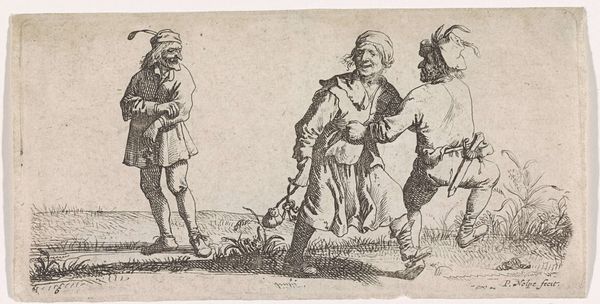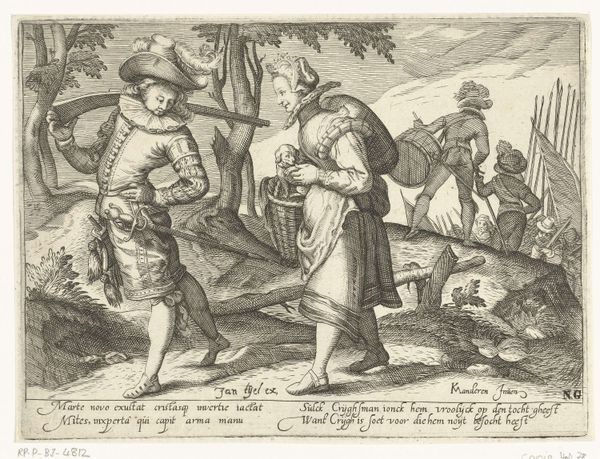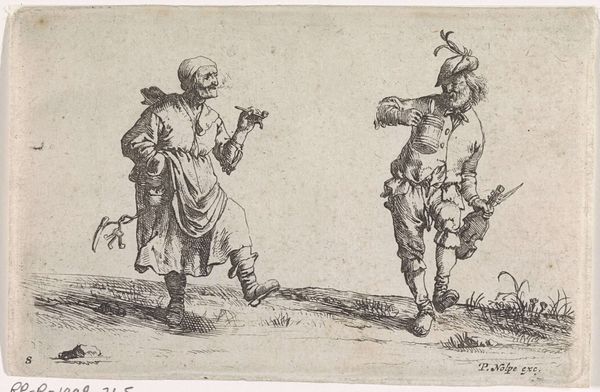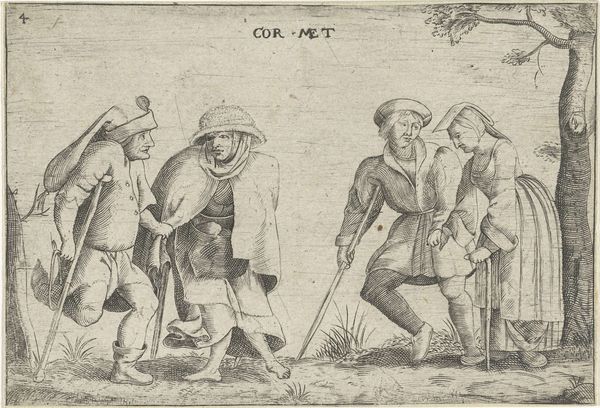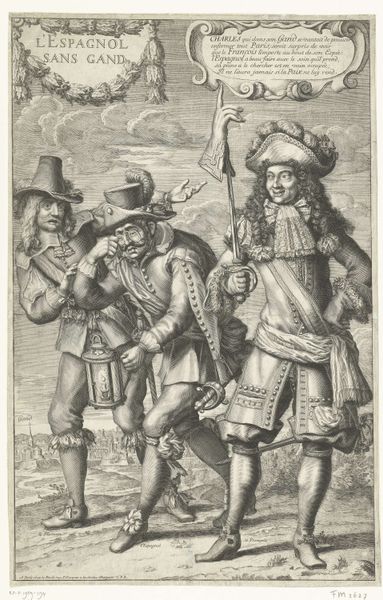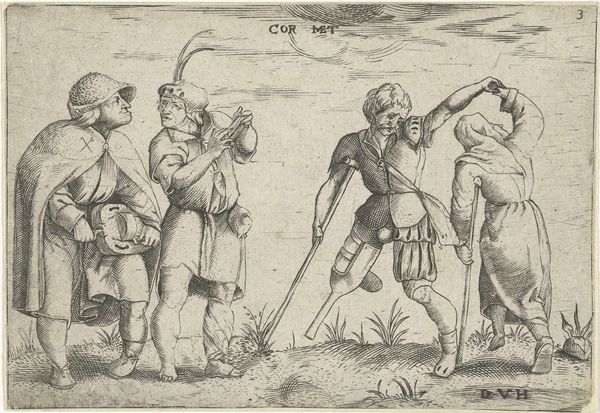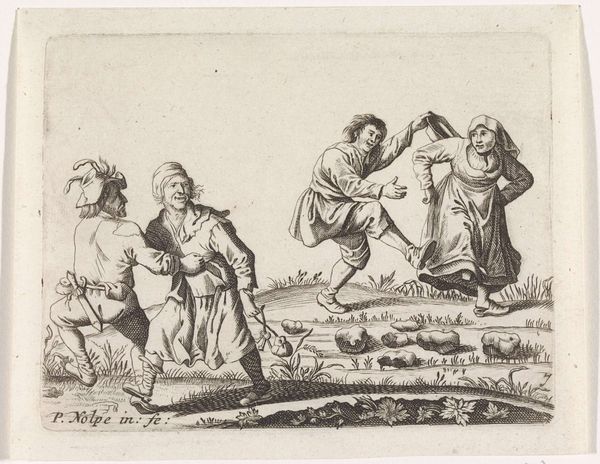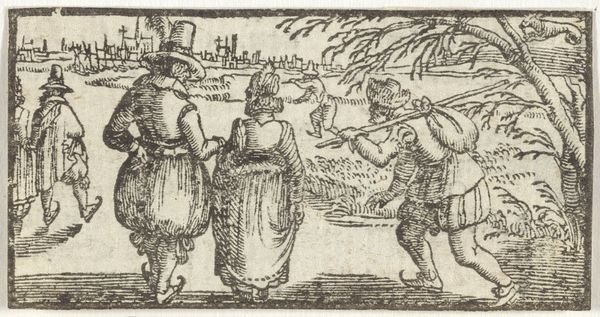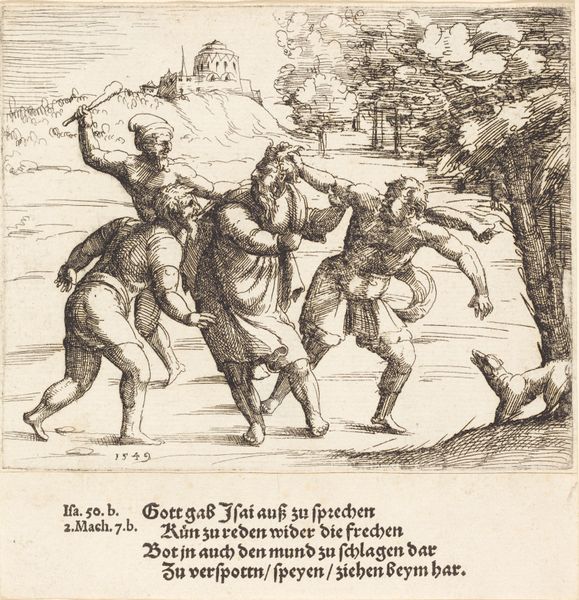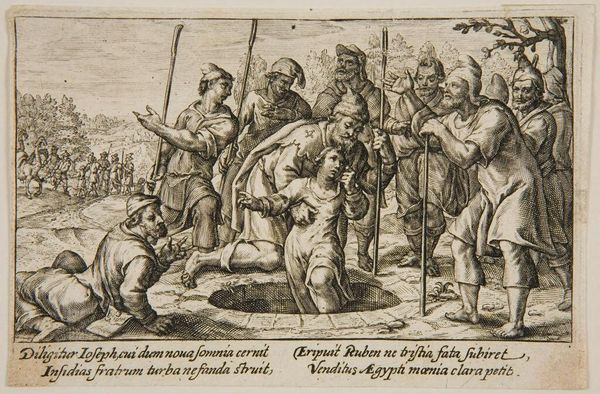
print, engraving
#
narrative-art
#
dutch-golden-age
# print
#
figuration
#
folk-art
#
genre-painting
#
engraving
Dimensions: height 75 mm, width 120 mm
Copyright: Rijks Museum: Open Domain
This print, "Two Dancing Farmers and One Watching," was made by Abraham Allard sometime around the turn of the 18th century. It's an etching, meaning that Allard would have used a sharp needle to draw into a wax-coated metal plate, which was then bathed in acid. The acid bites into the exposed lines, allowing for ink to be deposited and then transferred to paper. Look closely, and you can see the characteristic crispness of the lines, and also the burr created by the needle as it scrapes across the metal. The choice of printmaking as a medium is telling. It allowed Allard to create multiples of his image, which would have been relatively inexpensive and widely distributed. This aligns with the print's subject matter: everyday rural life. The image offers us a glimpse into the lives of ordinary people, their pastimes and social interactions. Considering the material and process of its making, this work bridges the gap between high art and popular culture. Allard's choice of etching, and his focus on everyday life, democratizes art, making it accessible to a wider audience and reflecting the social realities of his time.
Comments
No comments
Be the first to comment and join the conversation on the ultimate creative platform.
